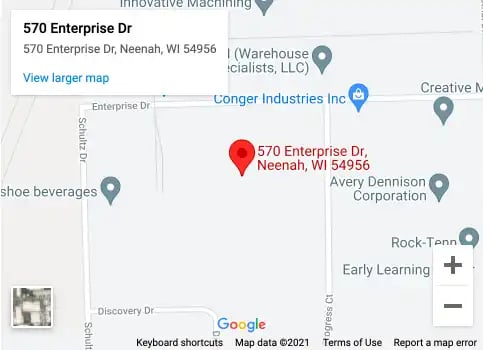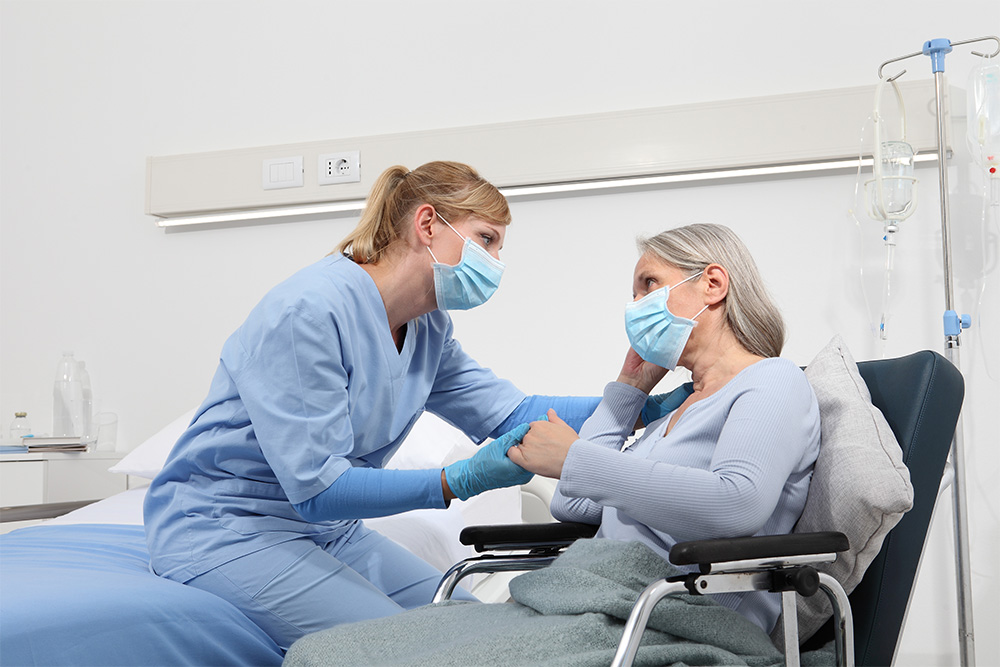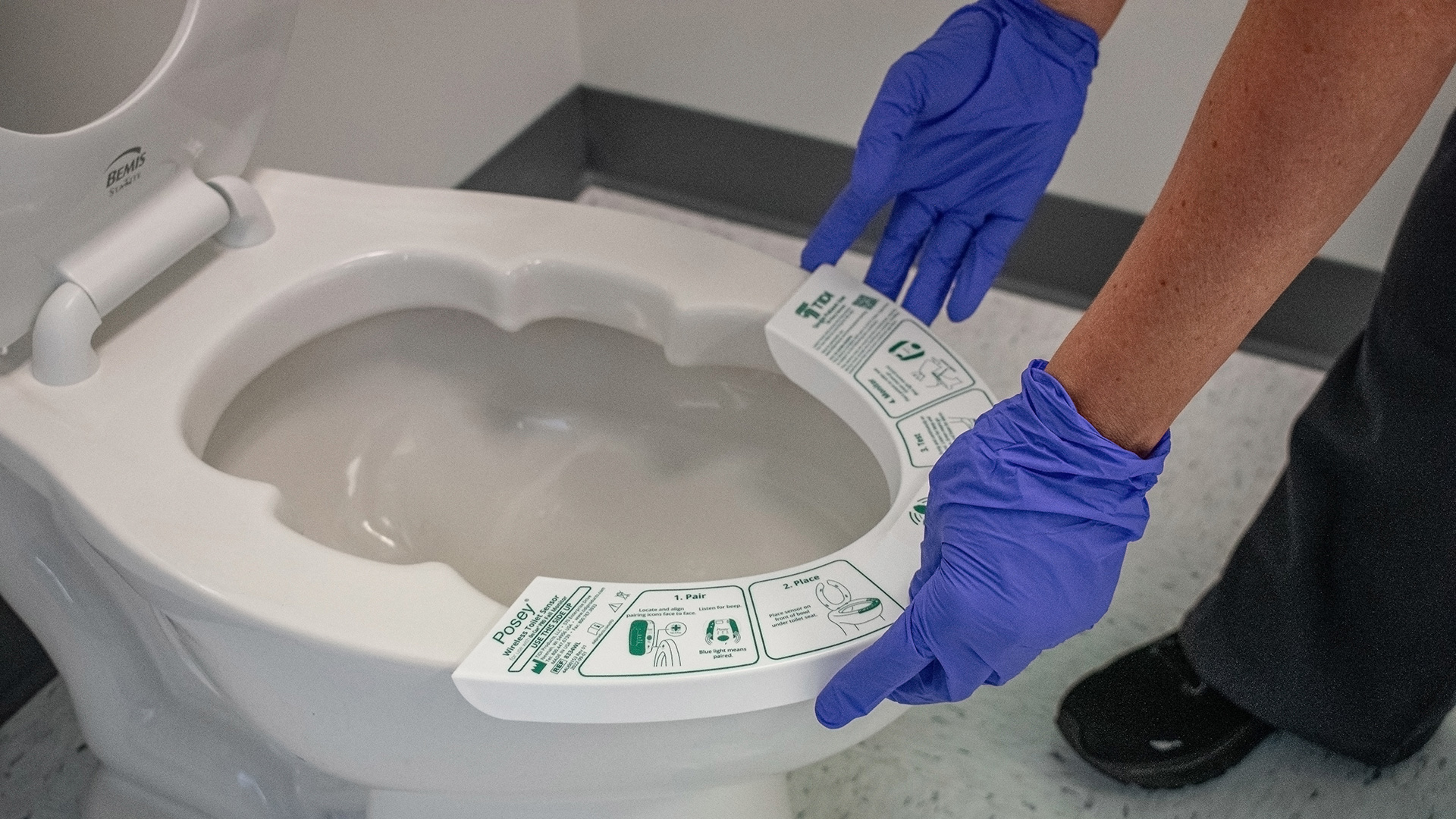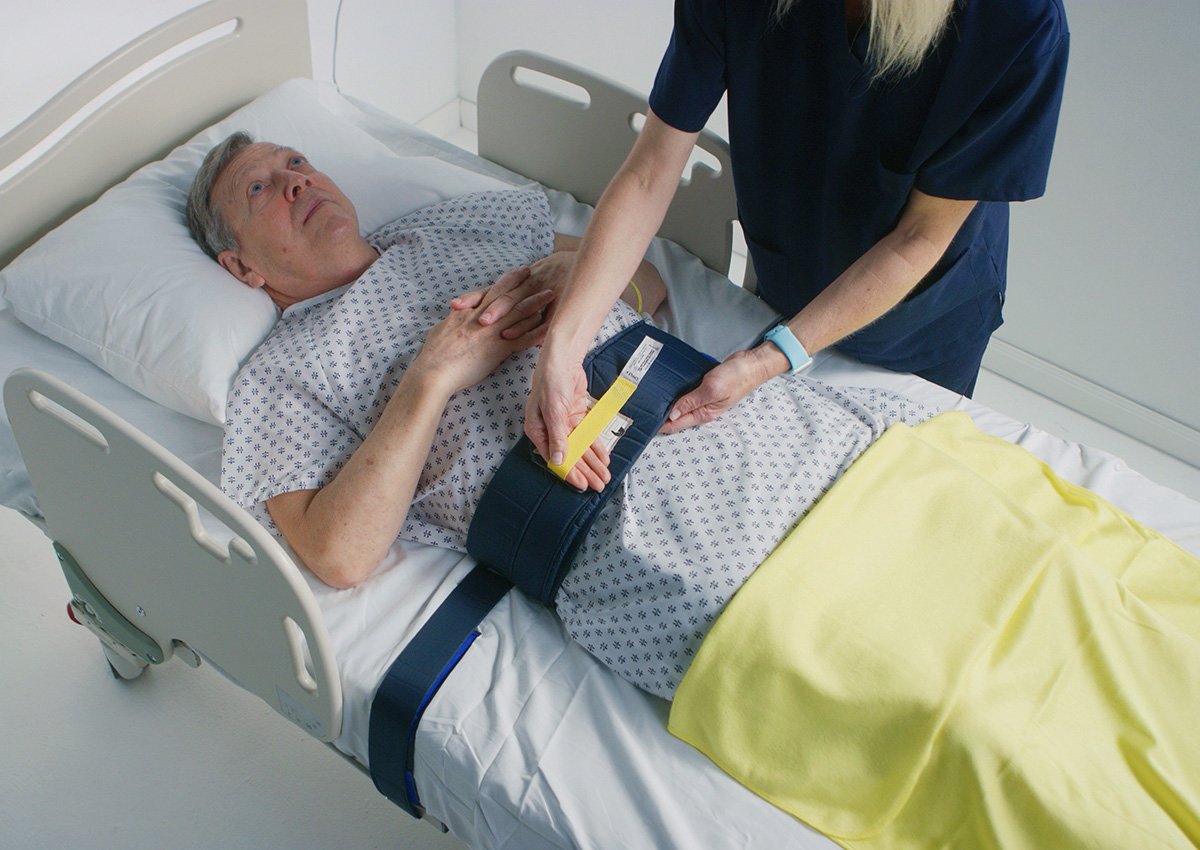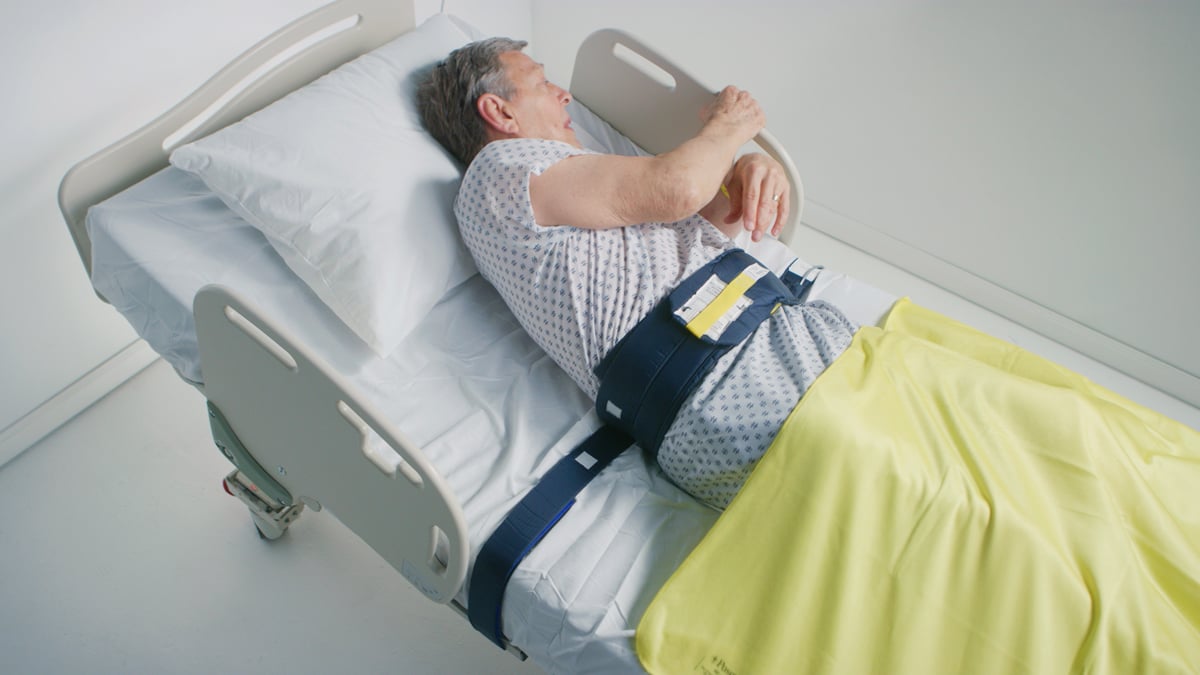In Part 1 of our three-part series on falls prevention technology, we review the role of technology in falls prevention and discuss how you can evaluate available technologies. Part 2 and Part 3 will focus on how to integrate technology into a comprehensive fall prevention program and how to optimize your use of technology, respectively.
Most of the information in this blog derives from a Posey® white paper1 written by Cynthia Saver and published by TIDI Products, LLC.
The Role of Falls Prevention Technology
Medical costs associated with falls at hospitals and long-term care facilities are steep. In addition, organizations can suffer financial loss from lawsuits related to preventable falls. More important, of course, falls can lead to serious injury and even death. However, the COVID-19 pandemic has made falls prevention efforts particularly difficult, as illustrated below.
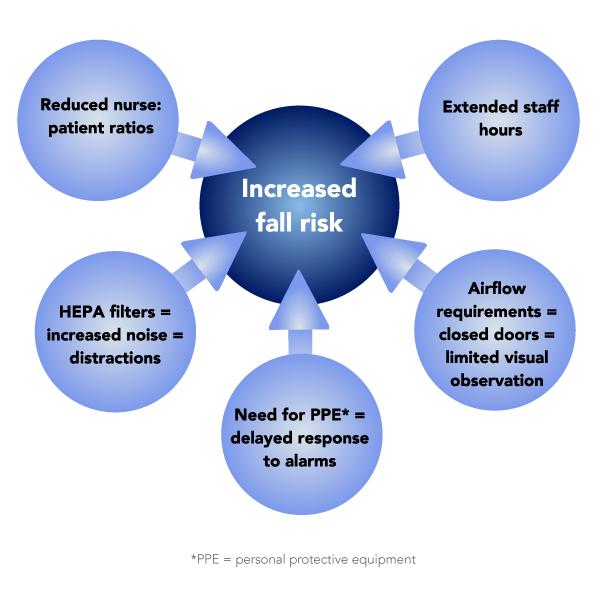
The goal of falls prevention technology is not to restrict patient movement, but to avoid the negative consequences of a fall. Technology can also increase the efficiency of healthcare professionals. For example, when an alarm alert prevents a mishap, nurses save time that would otherwise need to be spent on the additional care and documentation associated with a fall.
Unfortunately, technology is not always used effectively. In a study by Hoke and Zekany, of 67 falls that occurred in a progressive cardiac care unit over 2 years, only one patient who fell had an activated bed alarm.2 Because that alarm was set at its lowest setting, it would be activated only when the patient was completely out of bed. The authors of the study speculate that a more sensitive setting may have prevented the fall.
Any products used to prevent falls must be considered within the context of the individual patient’s needs, and the technology must be easy for staff to use. If technology is cumbersome to use, its effectiveness is reduced. It must also be the right technology, and appropriate selection requires understanding the various options.
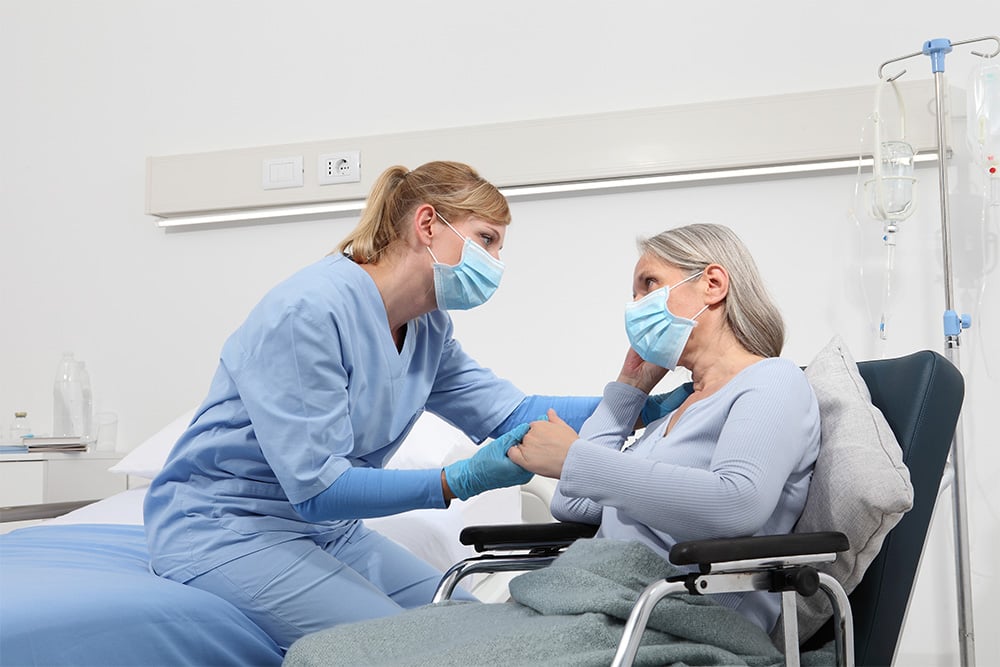
Types of Technology
A common method of fall prevention technology is the use of sensors. Sensors may be integrated into pads for chairs or toilets. When patients’ movements indicate they are getting near the edge, an alarm sounds so staff can respond and help patients exit safely. These devices contain pressure sensors alone or a combination of pressure sensors and an infrared beam (dual system) to detect the exit.3
Sensors also can be embedded into floor mats; the patient’s weight on the mat triggers the alarm. Most hospital beds now have sensors incorporated into them, but bed pad sensors are still used in some facilities.
Devices that use sensors can be wired or wireless. Both can connect to the nurse call system, eliminating alarm sounds at the bedside and providing information about the patient’s location, which speeds staff response. Other alarm options include a local alarm and an alarm on a staff member’s mobile device.
Wireless systems provide two significant benefits: (1) reduced tripping hazards for patients and staff and (2) greater ease and efficiency in moving patients because the alarm and pad do not have to be in close physical proximity. To ensure maximum benefit, it is helpful for devices such as chair and toilet pad sensors to have visual or audio controls that confirm the pad and the alarm are paired.
For example, the new Posey Sitter On Cue PRO™ Platform from TIDI Products (shown below) is designed to provide caregivers greater flexibility when monitoring patients at risk of a fall. This innovative falls prevention technology solution utilizes an alarm, a wireless chair sensor pad, and a wireless nurse call adapter. Tap-2-Pair™ technology is used to establish a wireless connection with a simple tap. Visual and audio indicators confirm device pairing.
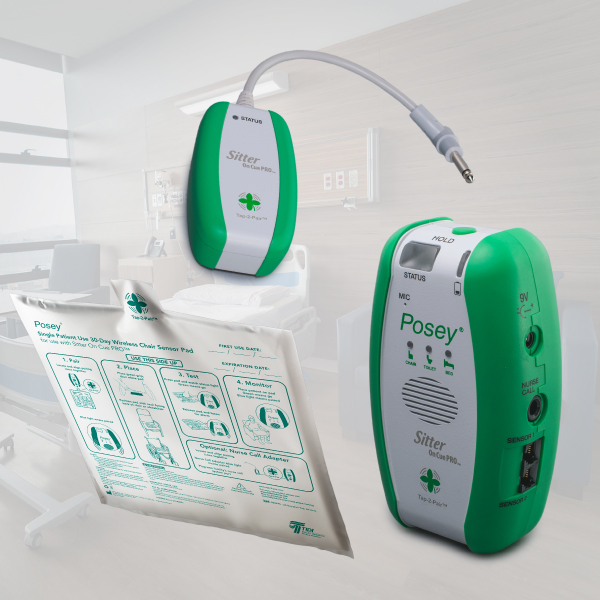
Evaluating Technology for Falls Prevention
Organizations should assemble a team of experts to evaluate a technology product before purchasing it. This team, consisting of clinicians who will be using the product and representatives from purchasing, finance, materials management, and bioengineering, needs to develop a plan for evaluation and decision making.
Criteria to be evaluated include the following:
- Functionality. This criterion represents the basic function of the technology. For example, alarms may be transmitted locally but also to the nurses’ station or nurses’ mobile devices. How the technology performs in real-life situations can be evaluated with a pilot study.
- Ease of use. Staff are more likely to adopt products that are easy to use. Assessment of this criterion includes checking for clarity of the instructions for use.
- Cost. Costs should be evaluated in the context of the organization’s fall rate (and the costs associated with those falls) and the estimated number of falls the product will prevent. The initial purchase cost and ongoing costs for disposables and maintenance should be considered.
- Cybersecurity and equipment safety. It is important to ensure the product meets standard electrical safety guidelines. Prompted by cyberattacks in recent years, many organizations now require a security evaluation for any device brought into the facility.
For additional information on this topic, as well as an extensive checklist of questions to consider when evaluating technology for falls prevention, download our white paper.
You can also visit our website to learn more about the new Posey Sitter On Cue PRO wireless technology solution for falls prevention.
SOURCES
1 Saver, C. Role of Technology in Falls Prevention: A Patient-centered Approach [White Paper (2022), TIDI Products, LLC].
2 Hoke LM, Zekany RT. Two sides to every fall: Patient and nurse perspectives. Crit Care Nurs. 2020;40(6):33-41. doi:10.4037/ccn2020289
3 Oh-Park M, Doan T, Dohle C, Vermiglio-Kohn V, Abdou A. Technology utilization in fall prevention. Am J Phys Med Rehabil. 2021;100:92-99. doi:10.1097/ PHM.0000000000001554



